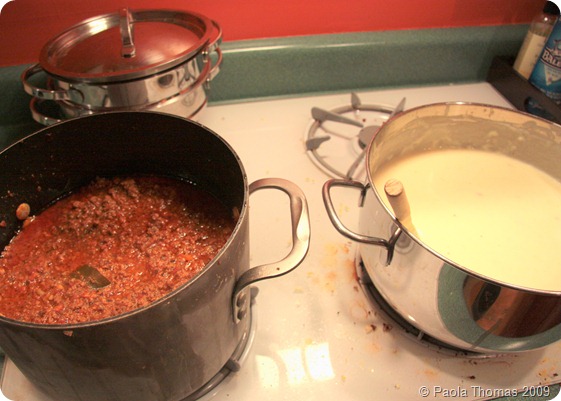My very first foodie memory comes from when I was about four years old and our Italian relatives were visiting us in London.
One rainy afternoon my nonna decided that she would make ravioli for us all from scratch. I sat on a chair mesmerised while my nonna mixed dough on the chipped pale yellow formica table and then rolled it out by hand into a huge wafer-thin sheet that covered said table from corner to corner. She then covered half the dough with little blobs of the filling she’d cooked up earlier and carefully folded the dough over the top. I helped her press the dough around the little blobs of filling and then watched as she cut out the individual ravioli with a little fluted wheel. And then she did the whole thing again (she was cooking for 8 I think) and then she made a sauce.
I remember being amazed that something she had spent all afternoon preparing was then gobbled up in ten minutes flat. I also remember thinking that nothing I had ever eaten previously had ever tasted so good (thus setting me up for a lifetime of pasta overconsumption).
There is no way I could ever make my nonna’s ravioli, I just don’t have the skill and dexterity she had to roll out a sheet of pasta that thinly, but, via my mother, I have inherited her recipe for lasagne.
Making lasagne the Northern Italian way is a long and painstaking process and it is only cooked on very special occasions. I try and think of it as performance art or something and set aside two cooking sessions to prepare it – one for making the sauces and one for the assembly.
The main difference between this and lasagne I’ve had in the US is in the saucing. Instead of ricotta, Northern Italians will generally make a bechamel (besciamella) sauce and instead of tomato sauce will use a thick meat ragu. Here is my grandmother’s recipe. Quantities are unfortunately all rather approximate.
RAGU BOLOGNESE
Finely chop a medium onion, a small carrot, a couple of garlic cloves and some parsley and sweat everything down in a couple of tablespoons of olive oil. I like to add a couple of heaped tablespoons of chopped pancetta at this stage but that’s purely optional.
Cook until the pancetta is crispy and the onions etc are soft and then add about 2 heaped teaspoons dried oregano and the minced beef (I use 1 pound for a smaller lasagne and 2 pounds for a big roasting dish size).
Brown the meat. Sadly I have experimented a lot with reduced fat mince and can only conclude that full-fat is much, much nicer and makes a more authentic sauce. If you want to make a lower-fat version bulk up the meat with finely chopped mushrooms which are not authentic but delicious – they do turn the sauce a slightly darker brown though.)
When the meat is brown add a couple of tins of chopped tomatoes (I sometimes push it all religiously through a mouli, but mostly I never bother), a couple of bayleaves, salt and pepper, and a slug of any wine you might have open in the fridge. if you’re using a lot of meat, add more tomatoes and wine. Sometimes I add a little sugar if the tomatoes seem to need it. Bubble the sauce gently for as long as you possibly can, or at least about an hour and a half, with the lid on the pan but open a crack to let the steam escape. It is cooked when little pools of red fat (!!!) appear on the surface.
SALSA BESCIAMELLA
Make a plain roux-based white sauce with around 2 pints of milk – though obviously you need to adjust this according to the size of your lasagne. The very best lasagnes all have plenty of creamy sauce though. At the end of cooking time, when the sauce should be the same consistency as thick cream, flavour it with salt, pepper and a little grated nutmeg. That is all. Resist the temptation to add cheese at this stage.
Please do not look at my horrible backsplash and kitchen paint colour. It will change one day, probably some time in the next millenium.
Megan Not Martha is having a more traditionally American lasagne moment over on her blog courtesy of her rather fabulous Baker’s Edge Lasagna Pan.
I can be very pedantic about lasagne (pronounced ‘lasagn-EH’). It’s never called ‘lasagnA’ in Italy. The name refers to the actual sheets of pasta and feminine nouns are pluralised with an ‘e’ in Italian.


Yummy! Perfect recipe for this time of year. Too bad my hubby is vegetarian. But what guests do not like lasagne?
This is wonderful, Paola! I’m learning so many awesome things from you. Thanks!
I do love lasagne but have to have a vegetarian version. Might have to make one tonight after reading your post.
You are doing a public service here. Thank you.